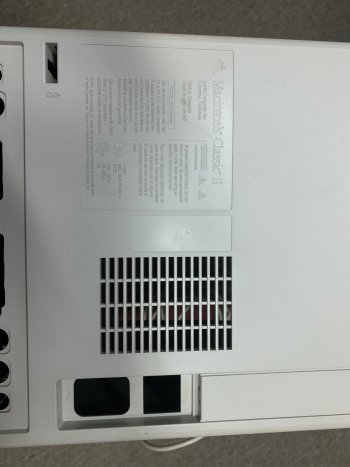Mac Classic/Classic II logic boards are notorious for leaking surface mounted electrolytic capacitors. Generally, you need to remove the old ones, clean the leaked, corrosive electrolyte and possible repair or jumper tracks that have been etched completely through (sometimes just a hair's width). Methods vary. Some will try cutting the capacitors to aid removing them, others will use fresh solder and an abundance of patience.
Be prepared for a terrible rotting fish smell when heat is applied near or on the leaked electrolyte.
Take some good pictures before cleaning - you should see glossy, wet looking patches where the leaks have run.
Cleaning can be a gentle 1" paintbrush, toothbrush with a good flushing of isopropyl alcohol and some even use a dish-washer. Personally, if I were to use a dishwasher (which I don't), I'd be concerned about adequate drying, even in places you CAN'T see (inside the rear sockets and under ICs). In this case, a compressor may help to "flush" out any excess water.
Replacement caps also vary. I use surface mounted Tantalum Capacitors, but you need to be careful in choosing the correct
case size as well as voltage & capacitance. Others use standard small radial thru-hole electrolytics with some unique lead bends to fit the original pads - care needs to be taken if using radial mounted caps, to NOT bump them and rip the tracks they're soldered to.
Next is the Analog Power/Sweep board. Some can be quite bad with leaking capacitors and corroding tracks on the solder side, and some components' legs nearly etched away (see the link below for a analog board repair saga with pics).
Hi folks, Seeking some guidance re: my little mac that couldbut, seemingly cant hang on any longer The back story: for the past couple of years, I have been using an old Mac Classic (M0420) purely as a writing machine. I absolutely adore using it for this purpose. The computer itself...

forums.macrumors.com
Good luck !



